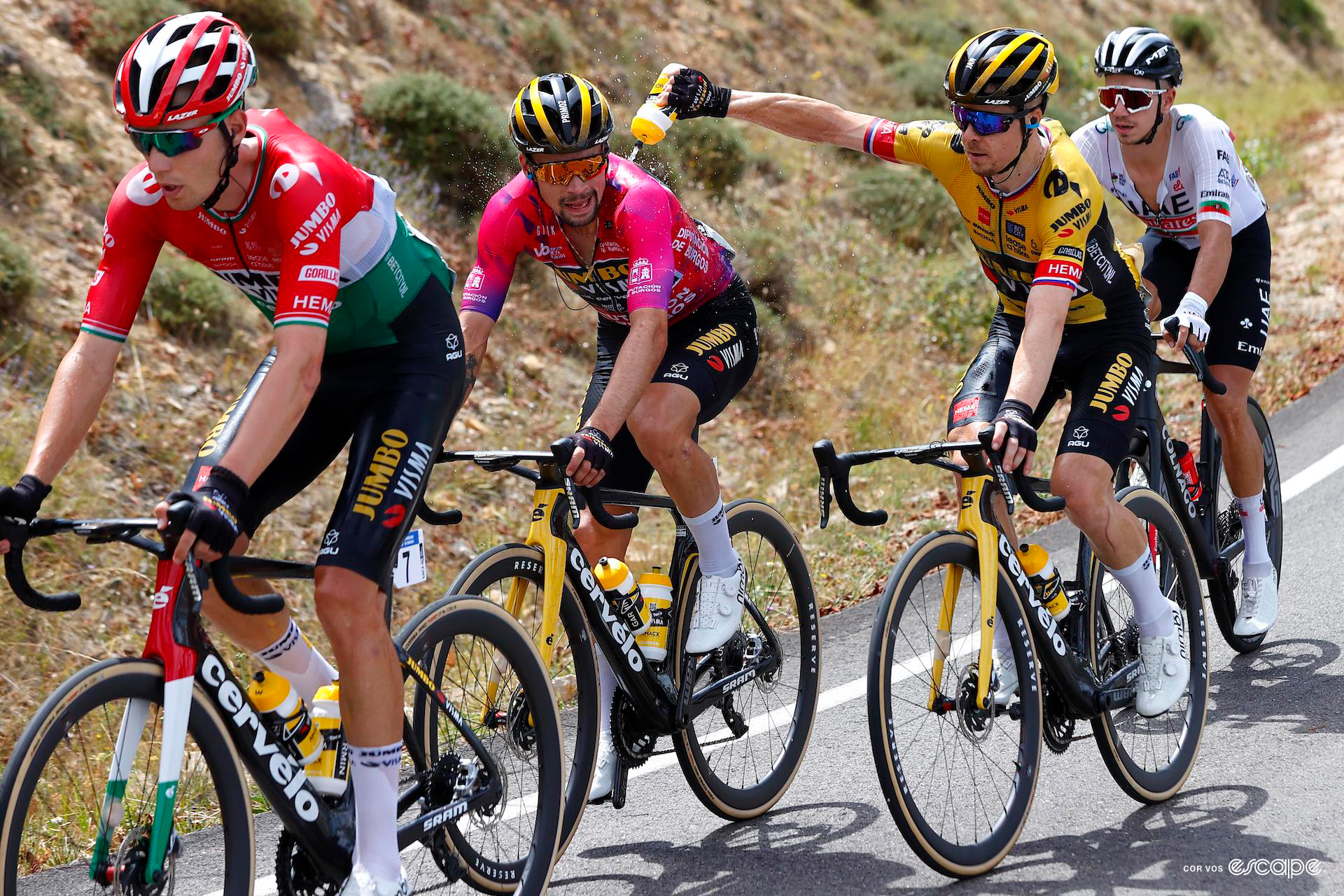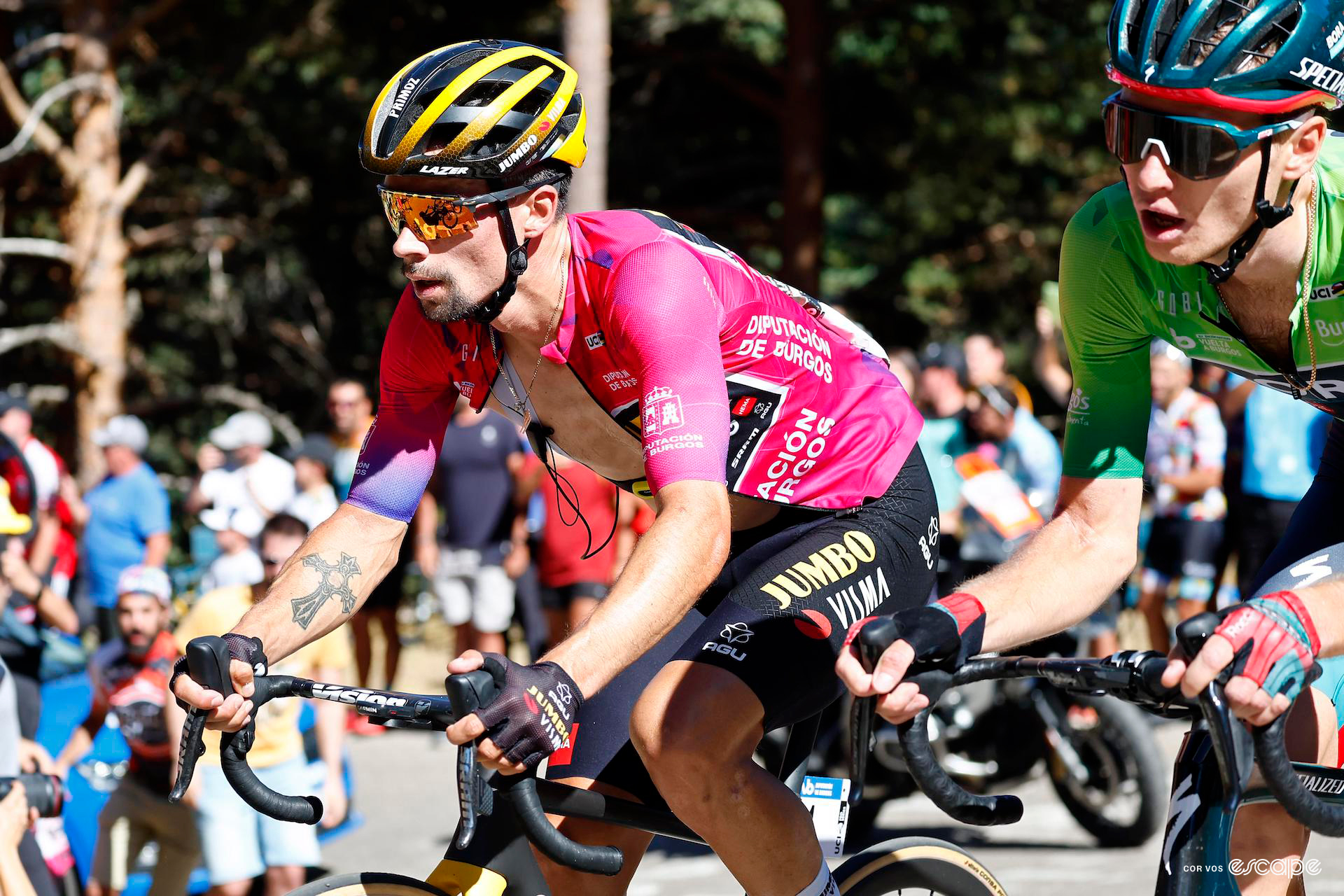Primož Roglič wrapped up overall victory at the Vuelta a Burgos on Saturday via a second individual stage win atop the hors-category Lagunas de Neila. Rather impressively, it’s the 20th GC title of his career, one you might call emphatic, dominant, commanding in its confidence, but perhaps more apt would be metronomic.
So, with the Vuelta a España seven days away, what can we take away from this performance?
Answer: very little that we didn’t know already.
There was no bombast nor spectacle, no long-range attack, but the Slovenian was on top from early in the race, winning stages 3 and 5, the race’s GC days, and – inevitably – the stage 2 team time trial with Jumbo-Visma. That, in fact, was the closest to a ‘statement’ of the whole five-stage race, and with the Vuelta doing its thing with an opening TTT of a similar length, that’s likely where the Jumbo-Visma team will have put a hefty focus at this race.
In the end, Roglič’s overall winning margin over second-place Aleksandr Vlasov was 39 seconds, with Adam Yates a further three seconds down, and when you consider the time gaps in the TTT – 30 seconds over Vlasov’s Bora-Hansgrohe and 34 over Yates’s UAE – it’s a fair conclusion that Roglič opted for the conservative approach as the race wore on. There were probing accelerations and interrogations of form on the climbs, but he was content to let his closest rivals accompany him to the finish line where Roglič was evidently and justifiably confident in his superior sprint.

This was the Slovenian’s first appearance at the Vuelta a Burgos, something like the Critérium du Dauphiné in its tune-up status before its related Grand Tour, though not as high profile. It was a hot and hard five days of racing that included one sprint, one TTT, and three days of climbing, one going the way of the breakaway, all offering a taste of Spain’s roads and a chance to acclimatise to the local weather.
For Roglič, it’s just one key element of his alternate build-up to the Vuelta.
He’s won the Spanish Grand Tour three times in his career, but it’s a race with which, outwardly at least, he has a particular relationship. That is, his run-up has typically involved a good deal of licking of wounds, literally and figuratively, the Vuelta acting as his redemption race after falling short at his big goal of the season, the Tour de France.
The last time he targeted the Vuelta outright was in 2019, notably stringing it together with a podium finish at the Giro d’Italia, and it was a great success, the then-29-year-old riding the red jersey into Madrid to claim his first Grand Tour victory. Every year since, he’s gone to the Vuelta after suffering defeat (2020) or crashing out of the Tour entirely.
This year, Roglič is back twelve months after a controversial crash robbed him of a chance to take a fourth consecutive Vuelta win, and this time he arrives unburdened by wounds incurred by the roads of France. Instead, he heads to Barcelona physically perfectly intact, and with the Giro d’Italia finally added to his palmarès earlier this year, his mental faculties are likely in sound condition too.
If any conclusions are to be drawn from the Vuelta a Burgos, it’s that Jumbo-Visma as a team is on track for its TTT, and Roglič is nothing if not confident. Just how strong he is, though, we’re yet to find out.
One major question remains though: how do three-time Vuelta winner Roglič and reigning back-to-back Tour de France champion Jonas Vingegaard fit together in the team’s line-up?
Did we do a good job with this story?

